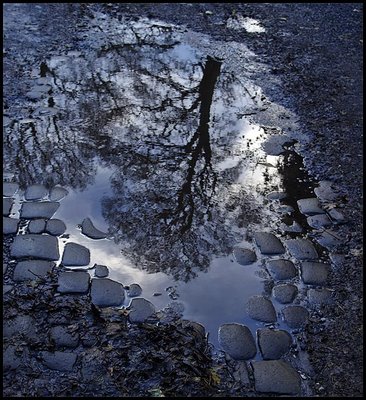I've been thinking more about this subject recently, and I think the rise of block paving, particularly around houses, is motivated by three factors. Firstly the increasing number of motor vehicles - many people see it as a surface on which to park a number of vehicles, and it's certainly useful for that. Secondly, it's seen as a low maintenance, "lay and forget" surface. Now that's questionable, particularly in the UK. Block paving has been down long enough for everyone to see that weeds, lichen and moss love it, and oil drips are absorbed by it. There's a lot of grubby looking surfaces around that, I think, will not last as long as tarmac, gravel or paving slabs! The final factor driving the use of block paving (and its close cousin, pattern-impressed concrete) is a desire for a "traditional", "olde worlde" look. I wouldn't deny that when it's used well block paving can complement an older building. However, pattern-impressed concrete never can! And around new "old looking" buildings it simply looks as false as the artificially distressed bricks, stuck on half-timbering, herring-bone brick infill and terracotta pinnacles that accompany it. In the past road surfaces designed to last were often made of cobbles. In Kingston upon Hull, blocks of pitch-impregnated wood were used! If the better materials that superceded them had been available at the time people would have used them. That's what we should be doing today.
I saw this puddle in some cobbles that had been revealed by traffic that had worn through the tarmac covering. I was at the end of a fruitless day of photography, where driving rain, dark skies and strong wind had stopped play. The wind was stirring the surface of the puddle and a sudden bright patch in the clouds gave some contrast to this piece of ground. I used a wide angle zoom lens, switched the camera to Program for speed and convenience, and quickly framed and took the shot. I like it for its colour and the interest that exists in such a prosaic subect.
photograph & text (c) T. Boughen
